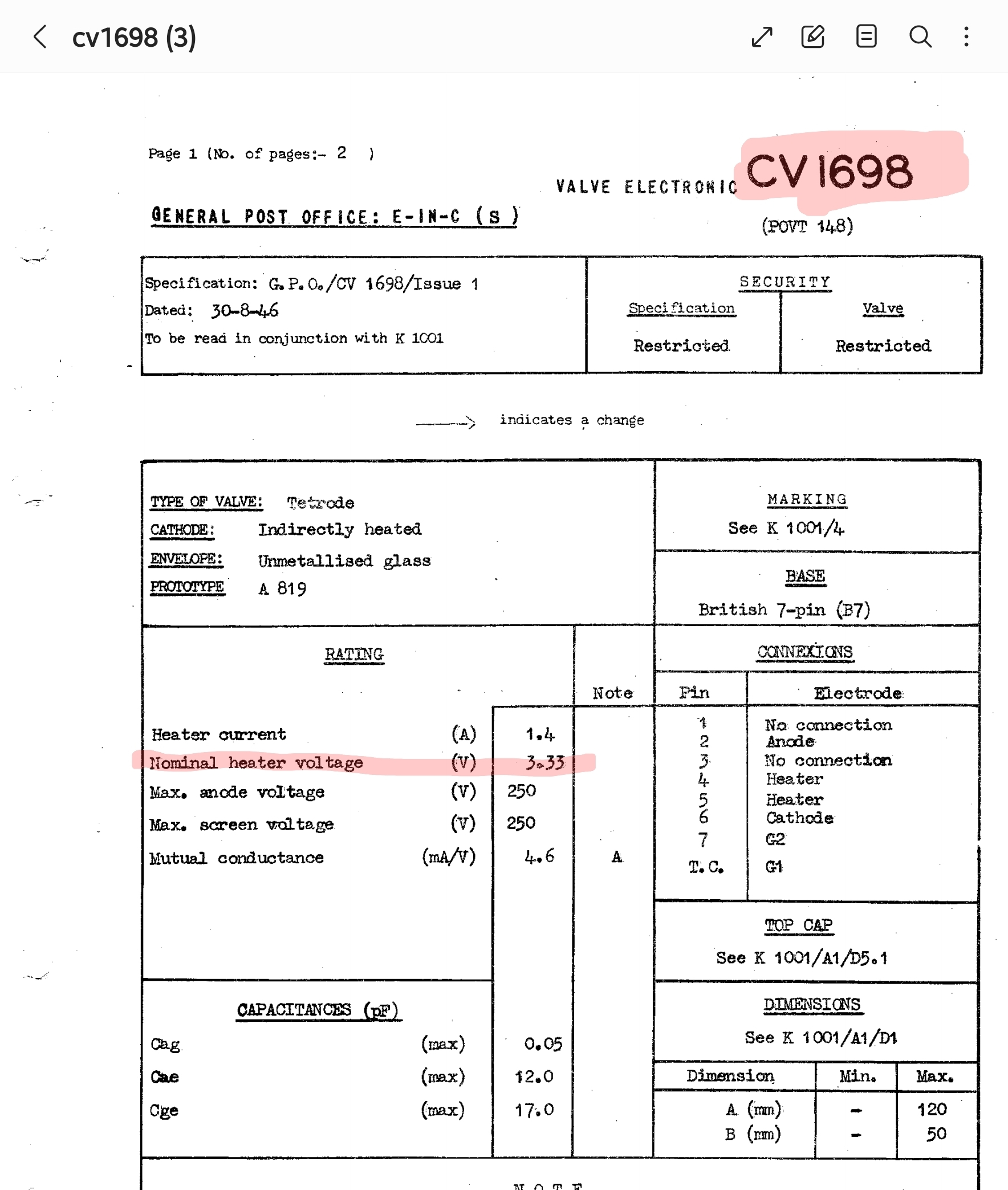In IDHT tubes:
The heater heats up the cathode, and the cathode "boils off" electrons that fly across the interelectrode space from the cathode to anode. The cathode is specially coated with metals that help with boiling off the electrons. Sometimes this proprietary coating varies by manufacturer - which could account for some of the difference in tube tone from one manufacturer to another. Sufficient heating of the cathode is needed to provide a "space charge" to prevent/neutralize stray gas ions from bombarding the cathode with high velocity and eroding the cathode coating. The better the tube vacuum, and better the getter in a tube, the less stray gas ions present to bombard the cathode and cause cathode coating damage.
A voltage that is too high on the heater of an IDHT tube can cause overheating of the cathode and cause the active barium to separate from the oxide cathode coating, harming emission performance over time. However, in the short term a higher heater voltage can increase cathode coating activation and create a very strong space charge and higher cathode emissions as electrons are more excited to boil off the cathode. Too high of a voltage is anecdotally found to lead to a "harder", sharper, more solid state, and less relaxed sound.
A voltage that is too low on the heater results in poor cathode performance as well, as the cathode oxide coating is not able to reach optimal temperature for its particular chemistry to sustain sufficient emission, and cathode poisoning occurs from stray gases due to a lack of a strong enough space charge. Eventually the cathode oxide layer gets sputtered away from the cathode and onto the grid, and the tube loses emission over time. Too low heater voltage on an IDHT tube anecdotally results in a "weaker" tonal profile - having lower punch, bite, speed, etc., but being more relaxed/smooth. As the space charge gets too weak there is also an increase in shot noise due to space charge smoothing no longer being as effective.
There is a goldilocks zone for IDHT tubes of plus-minus 10% high/low of the datasheet value on the heater where there will be optimal emission characteristics. This can be stretched out to around plus-minus 15% or so before there is perceptibly noticeable changes to the tone of the tube. Running on the low side of voltage (e.g. -5-10%) can help extend cathode life in some tubes without much detriment to the tube tone. I usually run the tube heater at approximately the datasheet value as the manufacturer's intended and designed the tubes for (maybe 2-3% low) - the best trade off IMO between high emission and long life of the cathode coating, plus good tone.
In DHT tubes:
Similar to IDHT tubes, cathode life of the DHT filament (which is also the cathode in DHT tubes) is proportional to the voltage that it is run at. Running slightly lower voltage on the DHT filament can increase DHT filament/cathode life by reducing the decarburation rate (reducing the rate at which the surface cathodic layer is depleted from the DHT filament). One interesting thing that occurs with DHT tubes however is that when dropping filament voltage significantly (filament starving), THD at the same output voltage also drops (see here for the data:
https://diyaudioprojects.com/mirror/members.aol.com/sbench102/dht.html).
























